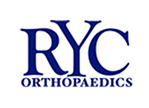News
When Can I Return to Play After an Orthopedic Sports Injury?
Source: Health US News
As an orthopedic surgeon specializing in sports medicine, the timing of when a player can "return to sport" is one of the most frequently asked questions of me – from the patients themselves, their parents (if they're minors) and from the media, especially if I'm being interviewed about a professional athlete.
Deltoid pain: Types and treatment
Source: Medical News Today
The deltoid is a large muscle responsible for lifting the arm and giving the shoulder its range of motion. It is located in the uppermost part of the arm, at the shoulder. Tendons attach the deltoid to the collarbone, shoulder blade, and upper arm.
Depressive symptoms associated with disease severity in patients with knee osteoarthritis
Source: Eurek Alert
The results of a study presented today at the Annual European Congress of Rheumatology (EULAR 2018) demonstrate that among individuals with radiographic knee osteoarthritis (OA), decreased physical performance and greater structural disease severity are associated with a higher risk of experiencing depressive symptoms.
No One-Size-Fits-All for Hydrating During Sports
Source: Medical Xpress
"Drinking only to thirst typically leads to significant dehydration, which is associated with exercise performance impairment," said study author Stavros Kavouras, a professor and director of the Hydration Science Lab at the University of Arkansas.
Joint Replacement: 5 Benefits of Outpatient Surgery
Source: Health Cleveland Clinic
Total hip and knee replacements have come a long way. Afterwards, people no longer lay in a hospital bed for three weeks; instead they generally begin walking at home within a day of the procedure.
Lifelong physical activity increases bone density in men
Source: Science Daily
Men have many reasons to add high-impact and resistance training to their exercise regimens; these reasons include building muscle and shedding fat. Now a researcher has determined another significant benefit to these activities: building bone mass
Hip dysplasia: When is surgery required?
Source: Medical Xpress
Hip dysplasia is a condition in which the top portion of the thigh bone doesn't fit properly in the socket portion of the hip joint — either because it is out of place or it is not the correct shape. In many cases, this condition is present at birth. Some people may not be diagnosed during childhood, however, and only when symptoms appear later is the problem identified. Although some adults with hip dysplasia need surgery to correct the problem, total hip replacement isn’t always necessary.
Newer UKR prosthesis for patients with osteoarthritis achieved satisfactory results
Source: Healio
Patients who received a newer prosthesis similar to the Miller-Galante knee design showed significantly better Knee Society function scores than patients who had a long-used prosthesis to which it was compared. However, the two implants performed about the same at short-term follow-up, according to a presenter.
Treatment of Locked Posterior Shoulder Dislocation With Bone Defect
Source: PubMed
Locked posterior shoulder dislocation is an uncommon condition and is associated with a reverse Hill-Sachs lesion in 50% of cases. The condition is likely to occur in cases of violent trauma, seizures, or electric shock. Unrecognized dislocation with humeral head fracture affects joint function and humeral head vascularity and may lead to chronic instability, osteonecrosis, and osteoarthritis.
Rates of Complications and Secondary Surgeries After In Situ Cubital Tunnel Release Compared With Ulnar Nerve Transposition: A Retrospective Review
Source: PubMed
The purpose of this study was to contrast the rate and types of complications and secondary surgeries for in situ cubital tunnel release and ulnar nerve transposition.





